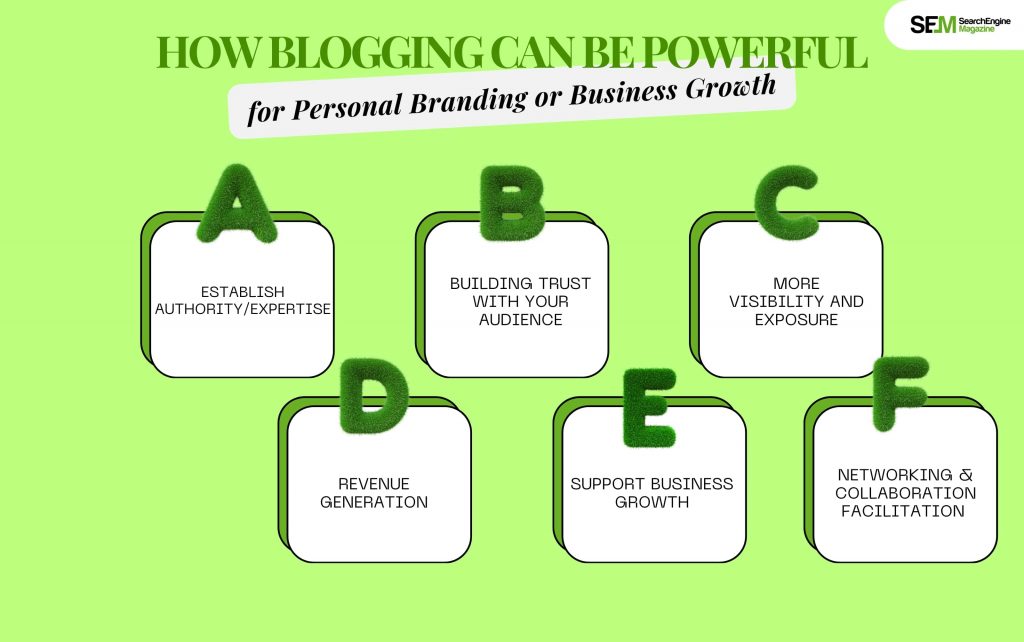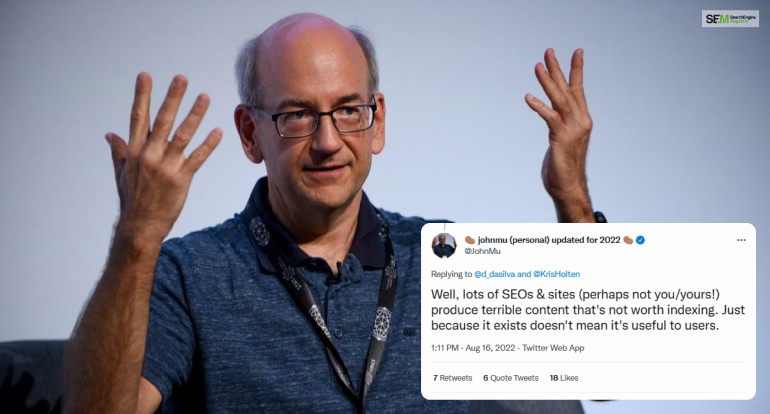Why Your Business Should Rethink How You Build a Website
Apr 30, 2025

Apr 30, 2025

Apr 30, 2025

Apr 29, 2025

Apr 28, 2025

Apr 27, 2025

Apr 26, 2025

Apr 25, 2025

Apr 23, 2025
Sorry, but nothing matched your search "". Please try again with some different keywords.


Blogging can be extremely effective for branding yourself or growing a business. Whether you hope to become known as an expert in a particular area, grow a business, or express your views to the world, a well-written blog can prove to be an enabler and help you build loyal patrons.
However, such common pitfalls catch many bloggers in the trap and do not bring them out to high peaks. Thus, avoiding such common pitfalls like ignoring your audience, lack of attention to simple SEO, and lack of niche are a few of them increases your chances for blogging success and making a positive impact in the niche.

And now, before revealing the mistakes one shouldn’t make, let’s first have a quick word on why blogging is so powerful: for personal branding as well as business growth, it offers several valuable advantages that include:
Quality content on your blog, day in and day out, will establish your credence. If your blog covers pain points or means to solutions in a specific space, people will start to look up to you as the one who knows.
Over time, this will help you build authority and even set you apart from everyone else in your industry.
Blogging allows you to connect more with your audience. Whenever you share valuable information, the people reading your blog will start trusting you soon.
They will begin viewing your blog as a place where they can gain reliable knowledge. This will lead to a better relationship with your audience and potential customers.
Blogging can help elevate your online presence. Properly crafted adequately with the right SEO strategies, your content will show up well when someone searches for related keywords, helping you reach your target audience with larger conversions per follower or customer.
A successful blog is also a source of income. Affiliates receive money through affiliate marketing, sponsored content, or the sale of digital goods. A person can earn passive income by setting up the right kind of blog and continuously updating it for marketers.
Blogging is an important aspect of digital marketing that can be crucially used for business.
Not only does it help in search engine optimization and brand awareness but also helps reach out to your audience, update them about new things, and promote your products or services.
Blogs also help businesses humanize their brand by sharing stories, insights, and behind-the-scenes content.
Blogging can connect other bloggers, influencers, or industry leaders through connections. This is to become a subject for collaborations, guest posts, and partnerships whose ends are mutual benefits between them.

While blogging is an effective tool, know also that overnight success does not happen. To achieve success, one needs efforts, a strategy, and knowledge of common mistakes to avoid. In making certain errors, progress is impeded, and reputation is marred-and growth comes to a slowdown.
By being aware and correcting these mistakes sooner, you can better optimize your efforts toward putting your blog on the right track to success. Below are the blogging mistakes you should avoid for successful blogging.
One of the biggest mistakes bloggers make is needing to understand their audience. Blogging without knowing who you’re writing for can result in irrelevant or unengaging content.
Whether you’re blogging for personal branding or business growth, understanding your target audience is essential for creating content that resonates with them.
Define your audience before even beginning to write. Recall their age, gender, interests, pain points, and what solutions they are looking for. Use this information to channel your content strategy so that whatever you write will impact them meaningfully.
Consistency is the key to audience engagement. Posting erratically or abruptly abandoning your blog for weeks or even months, will disillusion readers into no longer waiting around for your next post. This affects your Google rankings as well.
Create a content calendar and post consistently. Whether it’s weekly, biweekly, or monthly, set up when you’ll be posting new content, so your audience knows when to check back in. That also means that search engines know your site is active, which could improve your SEO.

One of the most important aspects about your blog: in case you fail to optimize your posts, you are likely to have your content buried inside a search engine’s results pages; it becomes really hard for potential readers to find you.
Do your basic research and apply appropriate SEO techniques, such as optimizing your blog posts for the most relevant keywords, meta descriptions, and getting those SEO-friendly URLs.
This should also be top-notch, readable content with a decent structure through headers, bullet points, and proper usage of internal/external links.
Customers will only exit if your blog is clear and unattractive. Bad user experience contributes to high bounce rates and ultimately harms the performance of your blog. , a clear, easy-to-navigate layout and fast-loading pages are essential to keep users interested.
Invest in a clean, responsive design that makes it easy for readers to navigate your site from any device.
Ensure that your pages load quickly; your blog has to be mobile-friendly. Use simple clear menus and organize content in such a way as to ensure that users find what they want.
Content without a niche is unlikely to attract or retain audiences. If you create too much content on really too many niches, it becomes too broad, so any one group isn’t aptly attracted to your content.
This, therefore, focuses you on attracting the right audience and builds authority in your area of expertise.
Define a niche for yourself and stick to it. Your blog should always belong to specific topics that may fall under personal branding or business. Whether on the lines of digital marketing, parenting, travel, or cooking, align the content accordingly to your niche.

It may be easy to write content that interests or is enjoyable to you as a writer. However, if the content doesn’t fill the needs of your readers, it won’t resonate with them. Writing for yourself limits the reach of your blog and fails to deliver value to your target audience.
Writing always has to be a goal of the audience. Ask yourself: What questions or problems do they have? What kind of content are they seeking? Write for them-think about what they need answers, solutions, and value, rather than just giving them your thoughts.
The most important thing for an unhappy blogger is not producing quality content. Quality content is always needed to attract visitors to come to your website and increase frequency.
Without well-researched, engaging, or informative posts, readers will never consider coming back to your webpage. Your audience needs high-quality content that answers their questions, solves their problems or entertains them.
These small pieces of information, such as meta descriptions, title tags, and alt text for images, give search engines context about your content. Skipping meta tags can really hurt your blog’s visibility in SERPs. Without proper meta descriptions and title tags, your blog may not rank well or even attract clicks from potential readers.
Internal links help readers find their way around your site, keeping them engaged in other posts. External links to reliable sources give credibility to your blog and build the domain authority of your site.
Without enough good internal or external links, your blog will have very limited SEO opportunities. External links to respected, relevant sources show that you’re connecting with the broader internet community, while internal links keep users on your site longer.
While internal links are important in making navigation better and improving search engine optimization, over-linking is as bad as under-linking. The former is overwhelming to a reader and makes your content look spammy, negatively affecting the user experience.
In today’s fast-paced world, most people process images faster than text. Omission of visuals in your blog posts makes your content feel stale and boring. Adding visuals like images, infographics, or video can increase engagement and improve the user experience.
Inculcate quality images, graphics, and videos to break the textual portion of your content so it is more attractive to your readers. Use visuals to present information and to corroborate the explanation of concepts, statistics, and stories in an interesting way.
Blogging is about posting and forgetting. Building a community means engaging with your audience for long-time relationships. And when bloggers ignore comments, emails, or social media messages, they miss opportunities to connect with readers and build trust.
Respond to comments on your blog posts, answer questions, or engage in some conversation with your readers. This is a way to create a community.
You’re showing them that you care about their input and that it has value. And of course, it might make them return to your blog repeatedly.

Technical words or heavy use of jargon will easily disconnect you from the audience; especially those readers who do not know about your topic.
You would still want to indicate that you are an expert in the given field of discourse but always strive for clarity and accessibility.
Use plain, simple, and conversational words. Make use of words and avoid jargon. You be technical, explain what the jargon means along with examples if possible.
Most bloggers will overlook email marketing in preference to social media or SEO marketing. But email is one of the best ways to nurture relationships with your audience and drive traffic to a blog.
Build an email list starting day one. Lead magnet, free e-book or checklist, is a great incentive to get people to sign up for your emails. Keep them engaged by sending updates, exclusive content, or promotions through your email list.
Some bloggers hesitate to promote their content because they don’t want to appear “salesy” or overly self-promotional. However, promoting your blog is essential to attracting traffic and growing your audience.
Engaging visuals not only enhance the user experience but also increase the chances of your content being shared on social media. Furthermore, visual content would separate huge blocks of texts and will make your posts look much more reader friendly.
Share your blog posts on social media, guest post on other blogs, participate in online communities, and collaborate with influencers. Don’t be afraid to promote your content strategically and highlight its value to your audience.

You will know what works and what doesn’t if you measure the performance of your blog. Creating and publishing content just in hopes of getting somewhere is going to get you nowhere.
Use Google Analytics and other analytics tools to monitor site traffic, bounce rate, and other conversions. Track your blogs’ performance through constant adjustments within a content strategy based on collected data.
Many bloggers are eager to monetize their blogs immediately, but doing so too early can damage your credibility. If your blog doesn’t have a solid foundation or a loyal following, aggressively pushing products or services can turn readers off.
Focus on creating rich content and engaging with your audience first. You will be able to add affiliate links, sponsored posts, or digital products only after you have managed to get them to return again and again without disturbing them.

Blogging success does not happen overnight. Many bloggers quit too soon without seeing immediate results. Sometimes the best thing is to become patient and persistent while working to develop your blog.
Blogging is a long-term commitment. Stay consistent, produce quality content, and be patient with time passing by as your audience grows. Relish small victories along the way and push forward.
Blogging can become a powerful tool for personal branding and business growth if appropriate strategy, effort, and the ability to avoid common mistakes are allocated.
By avoiding these blogging pitfalls, you can successfully create a solid blog that draws and keeps a targeted audience interested and engaged.
Remember to focus on delivering value, consistency, and patience while working toward various desires. With the right approach, your blog will become a powerful asset along your personal or professional journey.
You May Like To Read This:
Nabamita Sinha loves to write about lifestyle and pop-culture. In her free time, she loves to watch movies and TV series and experiment with food. Her favorite niche topics are fashion, lifestyle, travel, and gossip content. Her style of writing is creative and quirky.
View all Posts
Why Your Business Should Rethink How You Buil...
Apr 30, 2025
Maximize Telegram’s Full Potential with Det...
Apr 30, 2025
Loveable AI: Is This AI-Powered App Building ...
Apr 29, 2025
Which Is The Best LinkedIn Alternative? 11 Be...
Apr 28, 2025
Rytr AI: Is This AI-Driven Content Creation T...
Apr 27, 2025

